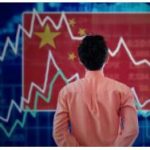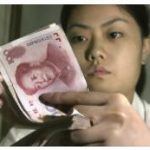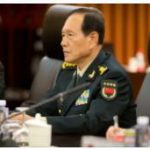In the decade 2005-14, China continued to pursue, often updating and integrating it, the essential political agenda that had been at the basis of the initiation and development, since the eighties of the 20th century, of the process of ‘modernization ‘and’ openness to the outside world ‘, combined with the need on the part of the Chinese Communist Party (CCP) to maintain and consolidate the leadership and control of this process. Internal and international factors periodically posed the need to modify or improve the functions and structures of the governance system and of power, in order to ensure greater effectiveness in government action, respond as much as possible to the growing material and spiritual needs of the Chinese people, address and solve historical problems (e.g., the gap between city and countryside) as well as contradictions emerged as an effect of the economic boom of recent decades (eg social and territorial inequalities, the relationship between economic growth and environmental compatibility, the spread of corruption, etc.). In a country characterized by an authoritarian and one-party political system, the strategic agenda is essentially marked by some key moments: in particular, the national congresses and the plenary sessions of the leading bodies of the CCP (official reports and various approved documents, renewal of leadership etc.).
Stability, development, harmony (2005-10). – The rise of a new leadership that emerged from the XVII National Congress of the CCP (2007), led by Secretary General Hu Jintao and Premier Wen Jiabao (the so-called fourth generation), represented in several respects the sign of the need to change – even if in the wake of the broad strategic lines drawn and the need to maintain party unity – a series of priorities and orientations defined in previous years by the so-called third generation of Jiang Zemin and Zhu Rongji. The latter, in fact, trained in the ‘political laboratory’ of Shanghai, the bastion of state industry, had taken advantage of their training (engineering) and administrative (economic management) experience in Beijing to emphasize the need for a new orientation of the reform process, centered on the objective of accelerated GDP growth, on re-centralization, on scarce attention to the countryside and on the priority development of coastal areas. In this perspective, Shanghai was proposed as an example for the whole country: an example centered on the great development of the Pudong area (born in the early nineties), a symbol of the effort to catch up with the technological delay of China, of the importance of foreign investments, of the presence of large multinationals. This strategy, alongside its undoubted successes, nevertheless caused growing regional and social imbalances, weakening prosperity in the countryside, massive layoffs caused by the restructuring of state-owned companies, spreading discontent and social protests. the presence of large multinationals. This strategy, alongside its undoubted successes, nevertheless caused growing regional and social imbalances, weakening prosperity in the countryside, massive layoffs caused by the restructuring of state-owned companies, spreading discontent and social protests. the presence of large multinationals. This strategy, alongside its undoubted successes, nevertheless caused growing regional and social imbalances, weakening prosperity in the countryside, massive layoffs caused by the restructuring of state-owned companies, spreading discontent and social protests.
Having accumulated an important part of their political and administrative experience in those regions of the interior most penalized by the strategies of the third generation, Hu Jintao and Wen Jiabao highlighted the need to develop those areas and to deal more carefully with the social distortions produced. from the extraordinary development of previous years, as well as to monitor the political risks inherent in the growth of social malaise. The pivot of this new strategic orientation was ‘scientific development’, the aim of which was to bring about growth that better suited the needs of the population. It was accompanied by the idea of creating a ‘harmonious society’, with a clear reference to the values of China linked to the Confucian tradition.
In the two-year period 2008-10, China rose to international prominence especially for two events: the Beijing Olympics (2008) and the Shanghai Expo (2010). A key theme of the 2008 Olympics was the idea of ’cultural China’ (in Chinese wenhua Zhongguo), understood as the pivot of a soft power that aimed to build a positive image of the country on an international level and to develop a dialogue with the world. external. In this way, cultural themes and symbols (for example, the Tang dynasty) were valued rather than political (for example, the communist revolution). In turn, the Expo (1 May-31 October), based on the slogan Better city, better life, saw the unprecedented participation of 192 countries with over 70 million visitors, strengthening the image of a China that aspired to an increasingly global presence and capable of overcoming any goal. As Wu Siegfried Zhiqiang, in charge of the Expo design and with a background of studies in Germany, pointed out, the idea of the H-city (Harmony city) as a guideline for the design and implementation at various levels of the theme of the Shanghai exhibition referred to the concept, already proposed in previous years, of a ‘harmony on three floors’ in the field of urban planning: between man and nature, between man and society, between history and future. According to Wu, China needed new types of cities to counter the frenetic development that had marked the last few decades, with often penalizing effects for certain social groups (migrants, low-income families). In short, it was necessary to correct certain distortions brought about by pure market logic: in this sense, the Expo was conceived as an opportunity for China to evaluate the experiences of others.
According to paradisdachat.com, 2010 also saw the carrying out of the national population census (1-10 November; the sixth since 1949): the total population was just under 1 billion and 340 million (over 1 billion and 370 million if Hong Kong, Macao and Taiwan), with an increase of 5.84% compared to the last census (2000), about 74 million people. There were over 400 million households, with a family average of 3.10 (−0.34 compared to 2000); women represented 48.73% of the total. From the point of view of the composition by age, 16.6% of the total were between 0-14 years (−6.29% compared to 2000), 70.14% were between 15-59 years (+ 3.36%), 13.36% were classified between the ages of 60 and over (+ 2.93%). And in the relationship between urban and rural areas, the trend towards the inversion of a historical process was confirmed.
In the latter part of 2010, some events linked to central themes should also be noted. In early November, the CCP Politburo dedicated a special study and work session precisely to the social question. In his speech, Hu Jintao highlighted how indispensable it was in the new period, taking up a slogan raised in the 1950s by Mao Zedong, ‘manage the contradictions within the people correctly’, in order to improve their standard of living, protect them. rights and interests, threatened by inequalities in income and in access to welfare and work. Many protests and major incidents – it was highlighted in the speech – continued to occur in areas with strong economic development, often at the local level: among these, the protest of over 1000 migrant workers in Sichuan, caused by unpaid wages, which clashed with the police with the toll of a dead worker and another injured; yet another massacre of miners in Henan (37 dead); protests and strikes in foreign companies (Honda factories) and suicides among the employees of the Foxconn techonology group of Shenzhen, linked to the Hon Hai group of Taiwan.
The fight against corruption, defined by the leadership itself as ‘a mortal enemy’, received new impetus from the publication of the first ‘ white paper ‘ (white paper) dedicated to the theme of good governance. In the same years, numerous cases of trials and executions were disclosed: the director of the Chongqing Municipality Judicial Bureau, executed for corruption and various crimes; the secretary of the Commission for the discipline of the provinces of Zhejiang and Guangdong sentenced to death (later suspended for two years) for illicit possession of money and shares; the mayor of the city of Shenzhen, removed from office and expelled from the party for serious violations of the discipline and the law, without forgetting the various cases of managers of companies arrested and sentenced to various sentences for attempted corruption.
Particular protests and tensions also resulted in Beijing being awarded the Nobel Peace Prize in October 2010 to dissident Liu Xiaobo, then in prison for an 11-year sentence. China portrayed the award ceremony in Oslo as ‘farcical’, in which the chair destined for Liu was left empty.








